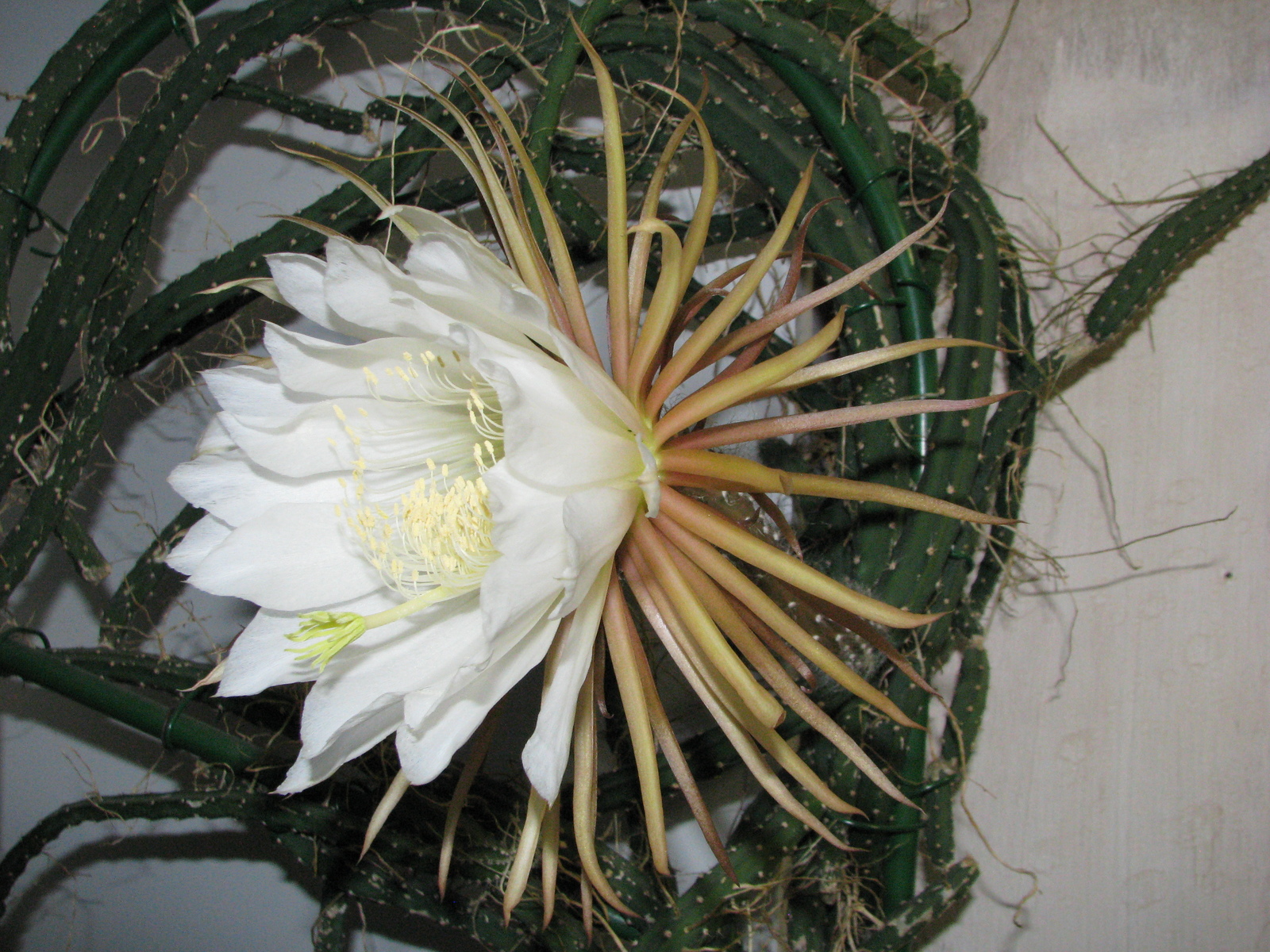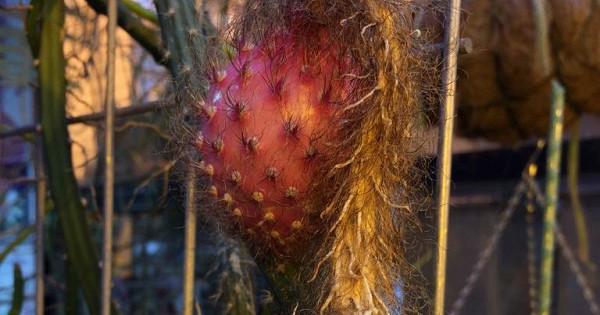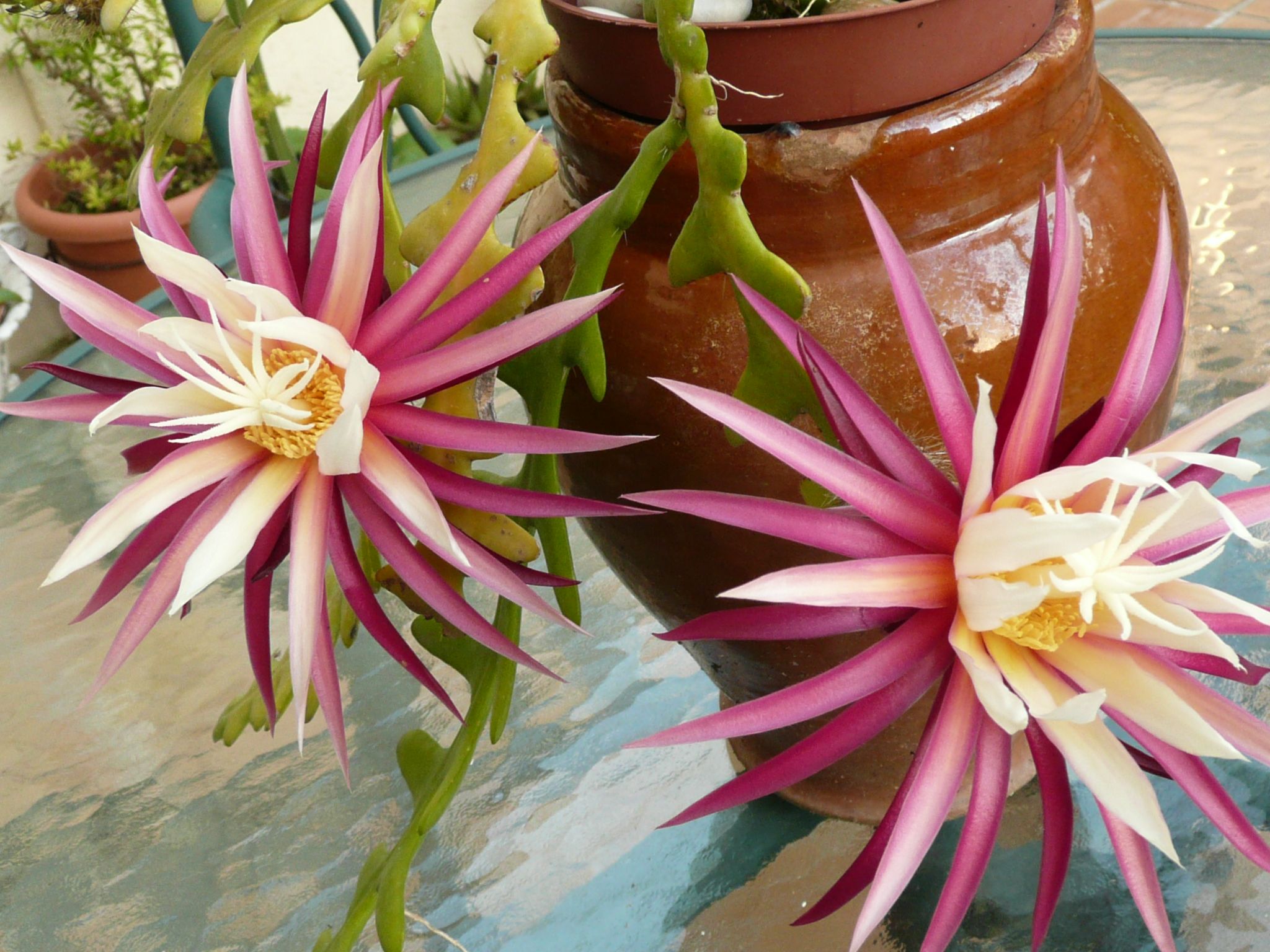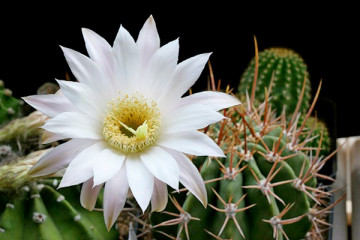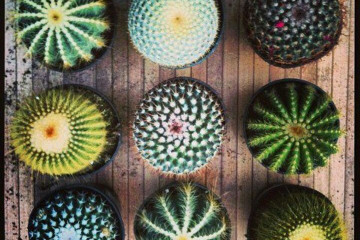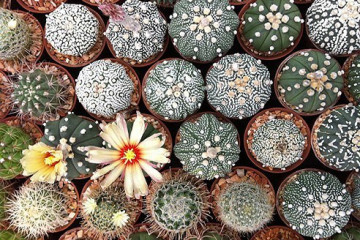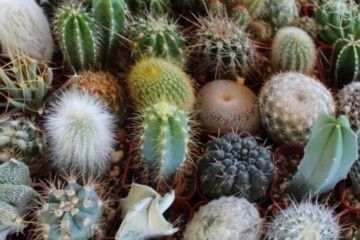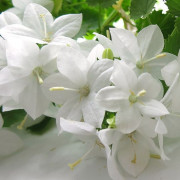Cactus queen of the night: main varieties and care options
Content:
Selenicereus validus is the botanical name for a succulent known to home growers as the queen of the night cactus. Fanned by legends, it is interesting already because it rarely blooms, but if it gives a flower, then it is incredibly attractive. It's a pity that such beauty lives very little, only one day, to become a prickly and unsightly cactus the next day.
Origin
This plant belongs to the genus Selenicereus, morphologically the word consists of two stems: "selenium", which means the moon, and cerius, which means "similar to a wax candle." Therefore, the selenicereus cactus is sometimes called "moon candlestick".
It comes from the humid and shady forests of Central and South America, distributed on the coasts of Cuba, in Mexico, on the islands of Jamaica. Thanks to the strong adventitious roots formed on thin shoots, these cacti can "climb" trees, grow even on steep rocks.
Main types
In addition to the queen of the night cactus, the Selenicerius genus has about 25 other species that can grow on trees, and on stones, and on the ground. They are different both in appearance and in flowering. Better known to flower growers:
- Selenicereus grandiflorus (selenicereus grandiflorus) - this is the very "queen of the night", the most famous species - Grandiflorus, the real pride of any grower. This cactus does not have very attractive creeping shoots, but is an excellent flower appearance with a subtle vanilla-like scent. This handsome man blooms at night, pleasing to the eye from dusk until morning, then a dazzling white single flower withers. In nature, Selenicereus large-flowered can bloom in several buds alternately. So you can admire them for several nights;
- Selenicerius pteranthus - another species of this cactus, it is called the "princess of the night", it differs from the "queen" by the lack of aroma. Like the previous plant, this cactus has the same intertwined branches covered with tenacious spines. Even indoor culture has such long intertwined branches that it is sometimes difficult to form and maintain them in the correct form;
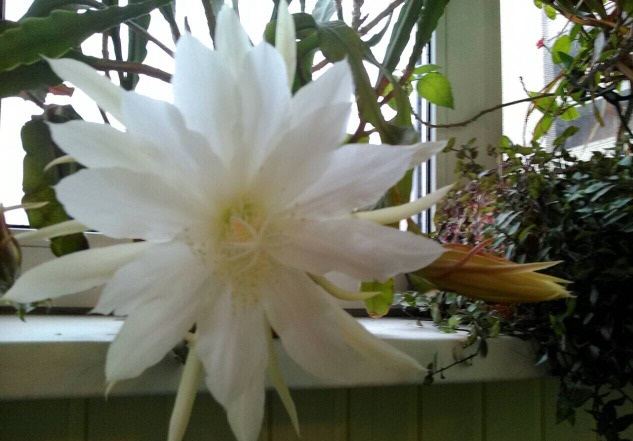
Both the queen of the night and pteranthus differ in the size of the flower, it can reach 30 cm in diameter
- Selenicereus Honduran - extremely rare in home floriculture and an infrequent specimen even in the collections of botanical gardens. The cactus flower is 20 cm in diameter, it is beautiful and noble. Experts from the Moscow Pharmaceutical Garden have achieved not only flowering in a botanical garden, but also pollination with fruiting. By the way, the Honduran Selenicereus gives an unusual aroma and taste of the fruit;
- Selenicereus hook-shaped - this species has the largest flowers, their diameter reaches 40 cm. The stem of the plant is 4-5 ribbed, surrounded by hooked processes;
- Selenicereus anthonyanus - another species, in Russian sounds like Selenicereus Anthony, is distinguished by an unusual cut of shoots. They are carved, somewhat reminiscent of a fish skeleton. Therefore, the name translated from Latin sounds like "fishbone".
Home care
The fame of this cactus is connected to a greater extent with the uniqueness of the flower. It has become fashionable to come to the botanical garden to capture the moment that comes once a year. Popularity is also growing among fans of indoor floriculture. Caring for it is not very difficult, but you need to create conditions for the plant to bloom.
Temperature
The temperature conditions for keeping the plant completely coincide with the conditions of central Russia. In winter, it is at rest, so the best temperature for it is plus 15 degrees or a little higher. It is also important that the cactus does not tolerate drafts and a sharp change in the regime of maintenance.
If he is going to bloom, you need to especially protect him - with a sharp change in temperature and other unfavorable conditions, a cactus can very quickly shed its buds.
Lighting
Like other types of cacti, Seleniceriuses love light, so they can be safely placed on the lightest window sill of the apartment. Plants do not suffer from sunlight and do not get burned, even under direct rays. In winter, it is advisable to extend the daylight hours to 10 hours by installing a source of artificial lighting near the cactus.
Humidity
In the room where the cactus grows, it is not required to maintain any special humidity. An ordinary apartment is quite suitable for the normal growth of the plant. To avoid collecting dust on the processes, it is recommended to periodically wipe them with a damp cloth.
Priming
The soil for such plants is sold ready-made, the packaging says “For succulents and cacti”. If you prepare the mixture yourself, then you must remember that the soil should be lightweight, well permeable to moisture and air.
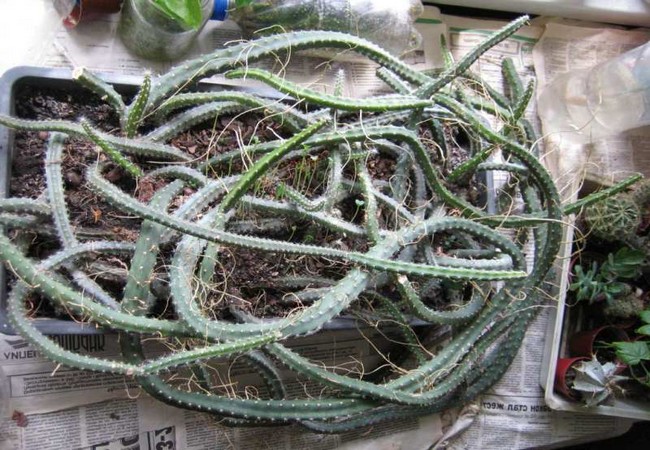
It is sometimes difficult for the many-meter-long cactus lashes in the house to create all the conditions, but the gorgeous flowering is worth the effort.
To prevent rot in the pot, you can add a handful of crushed charcoal.
Watering
It is much worse for a cactus if it is flooded than not. Like other succulents, this species of cactus is able to tolerate some lack of moisture in the soil. It is ideal if you water the plant after a dry crust forms on the soil surface in the pot. Excessive flooding can give rise to destructive rot. Water the cacti with water at room temperature, preferably soft.
Top dressing
Fertilizers for this plant are also sold ready-made. They are brought in during the flowering period, but at other times a cactus that grows intensively needs constant supportive feeding. Therefore, it is recommended to apply fertilizers every month two or three times, except for the winter period (it lasts from November to March), at which time the cactus needs rest.
Seat selection
In nature, this plant is epiphytic, that is, it spreads and develops, attaching itself to other plants or rocky surfaces. Therefore, a vertical support would be an ideal placement for a prickly, branchy flower. There is also an ampel growing method.
The cactus queen of the night is an interesting plant for indoor floriculture. It is distinguished by high decorativeness of flowers, the fruits can be tasted. More than a century ago, this plant was also described as having a strengthening effect for the human body. So, in folk medicine, it is used as a remedy for the treatment of heart disease and some other health problems.
Basically, it is considered a therapeutic extract from selenicerius as part of finished preparations for angina pectoris. True, official medicine questions the effectiveness of treating heart failure in this way.
